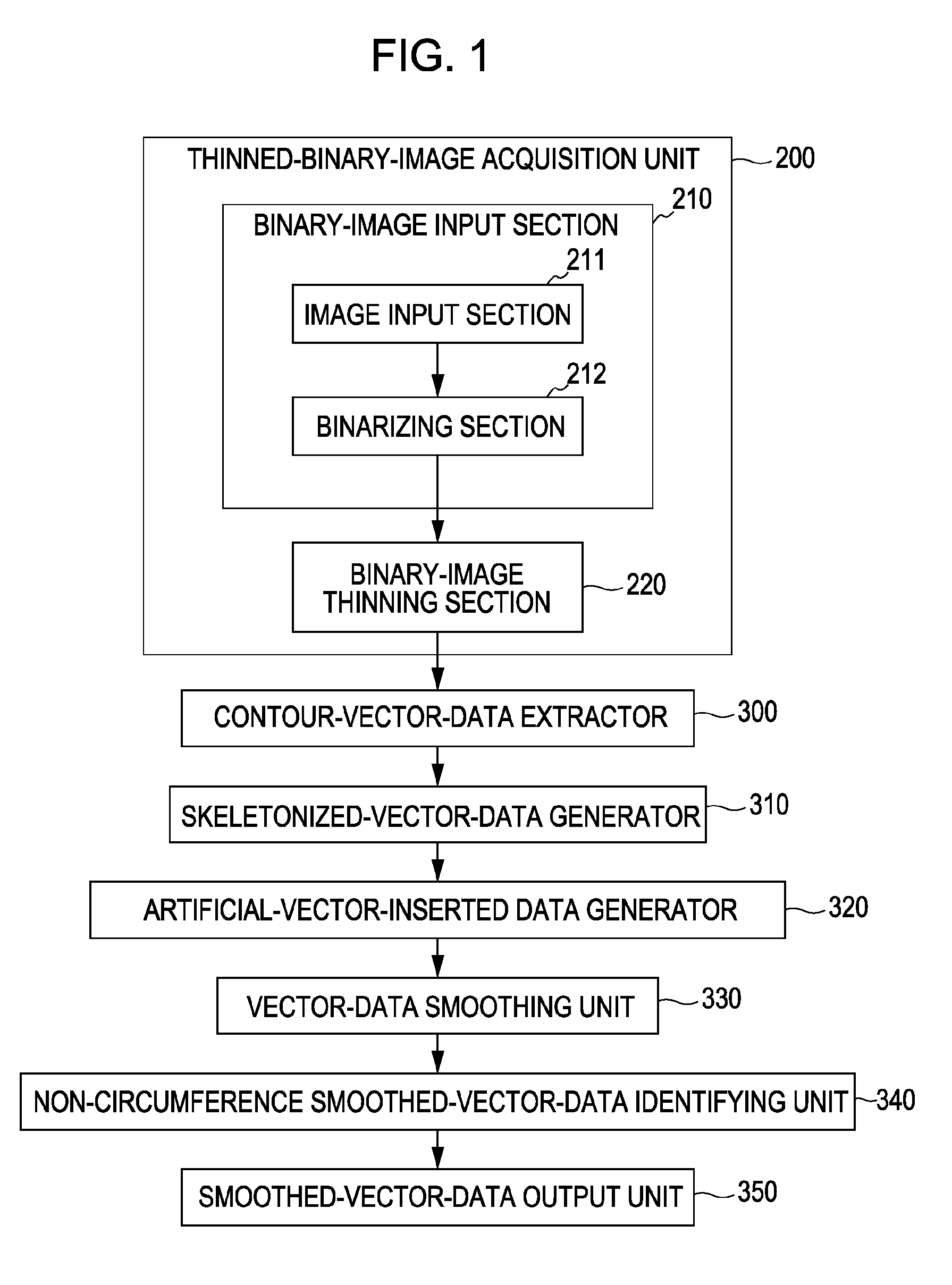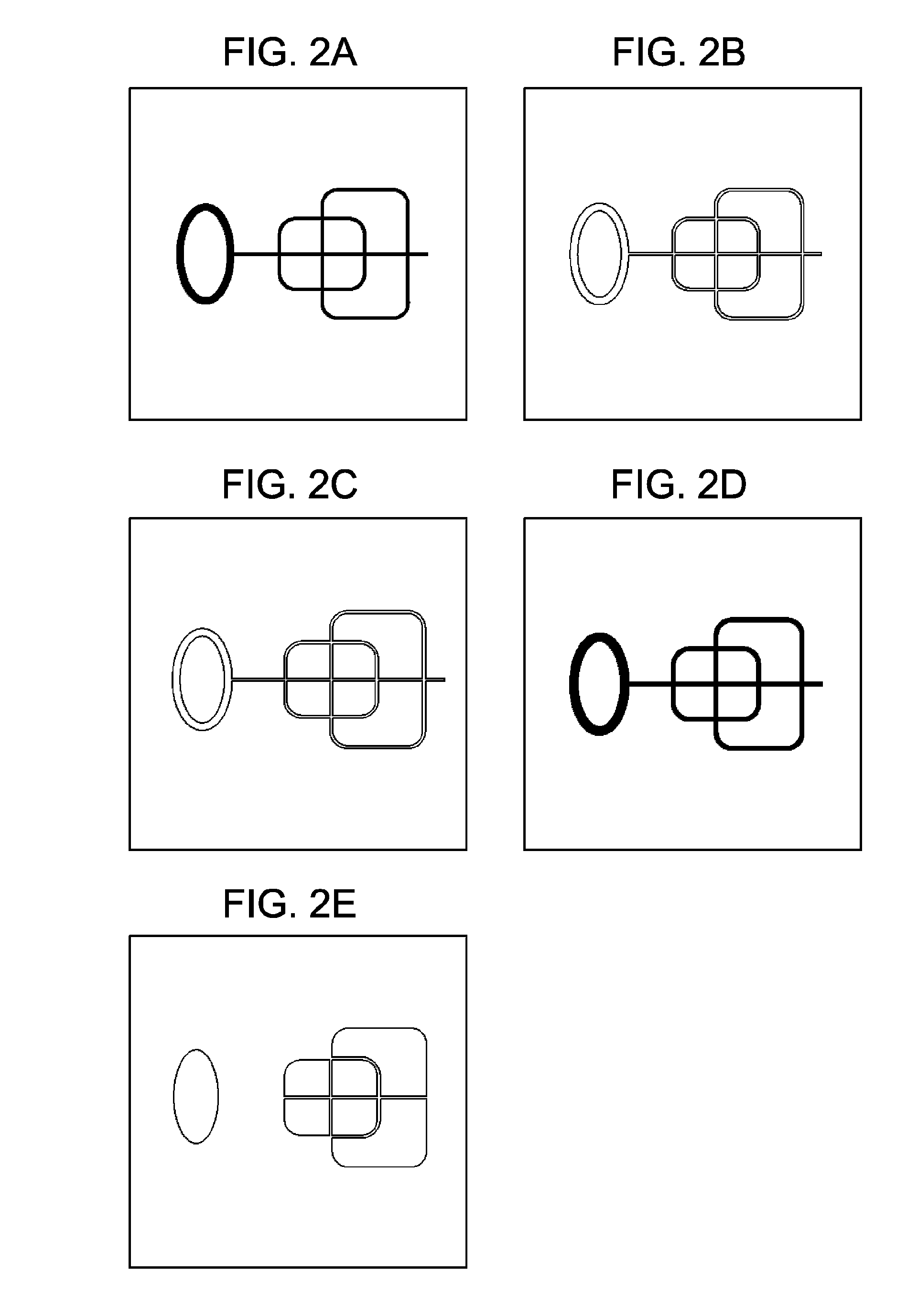Image processing method and image processing apparatus
a processing method and image technology, applied in the field of image processing techniques, can solve the problems of inability to extract lines included in a certain drawing, inability to attach any importance to the thickness of lines, and only drawing lines with thin lines, so as to reduce the number of times the image is scanned
- Summary
- Abstract
- Description
- Claims
- Application Information
AI Technical Summary
Benefits of technology
Problems solved by technology
Method used
Image
Examples
first embodiment
Modification of First Embodiment
[0179]FIGS. 29, 37A, and 37B simply show examples of data formats, and the present invention is not limited to them. For example, the smoothed vector data can also be output in the SVG format. In addition, a table including only the total numbers of contour points in the respective vector sequences can be written in a data area separated from the data regarding vectors in the vector sequences. For example, in FIG. 29, the segments indicating the total numbers of points in the first to ath contour lines can be collected next to each other in a certain data area, and then the segments indicating the data regarding the first to ath contour lines can be placed in the next data area. In addition, the start / end terminal-point information is not limited to the closed-loop markers shown in FIG. 37A as long as the vector sequences with and without the start / end terminal points can be distinguished from each other.
Other Embodiments
[0180]According to an embodime...
PUM
 Login to View More
Login to View More Abstract
Description
Claims
Application Information
 Login to View More
Login to View More - R&D
- Intellectual Property
- Life Sciences
- Materials
- Tech Scout
- Unparalleled Data Quality
- Higher Quality Content
- 60% Fewer Hallucinations
Browse by: Latest US Patents, China's latest patents, Technical Efficacy Thesaurus, Application Domain, Technology Topic, Popular Technical Reports.
© 2025 PatSnap. All rights reserved.Legal|Privacy policy|Modern Slavery Act Transparency Statement|Sitemap|About US| Contact US: help@patsnap.com



